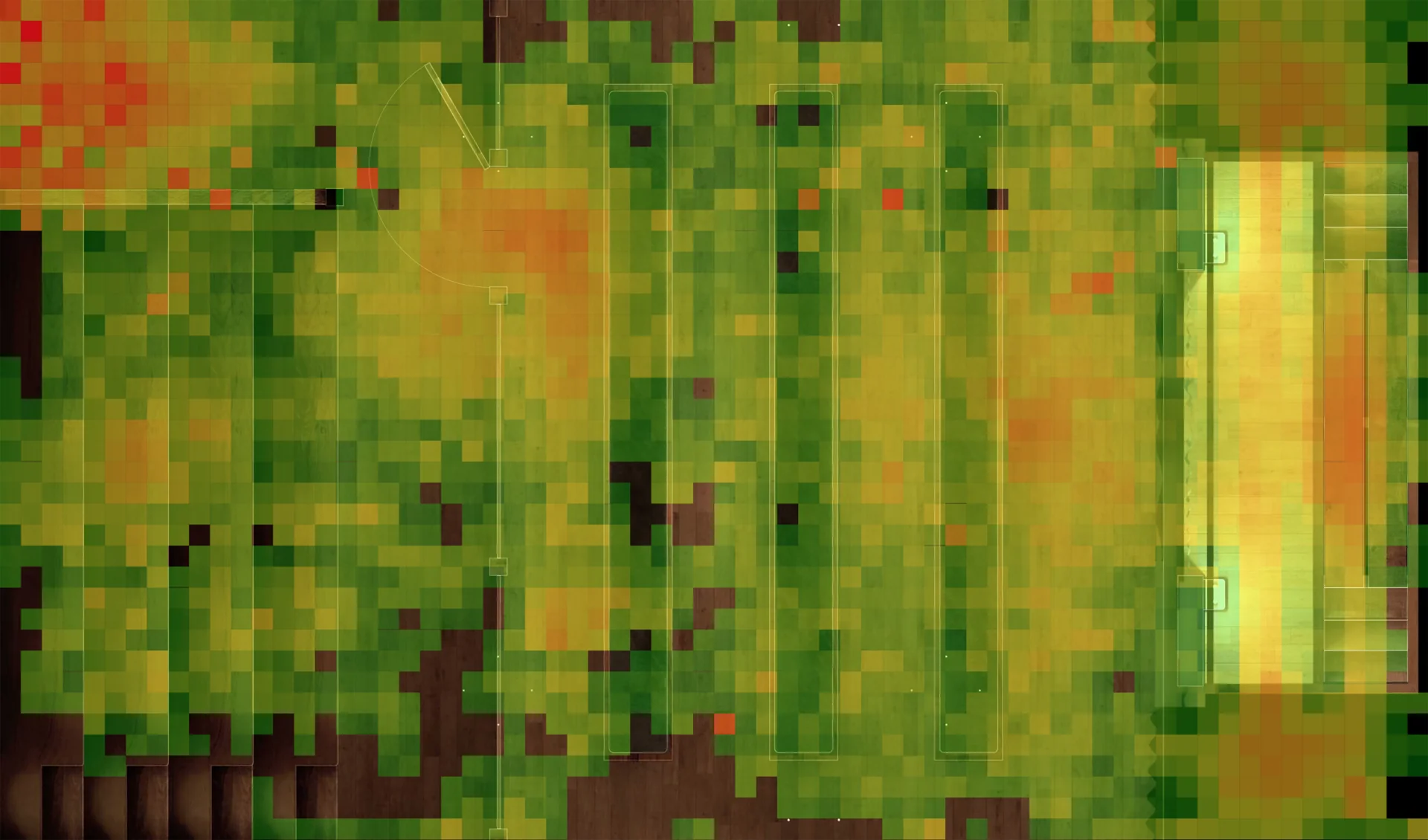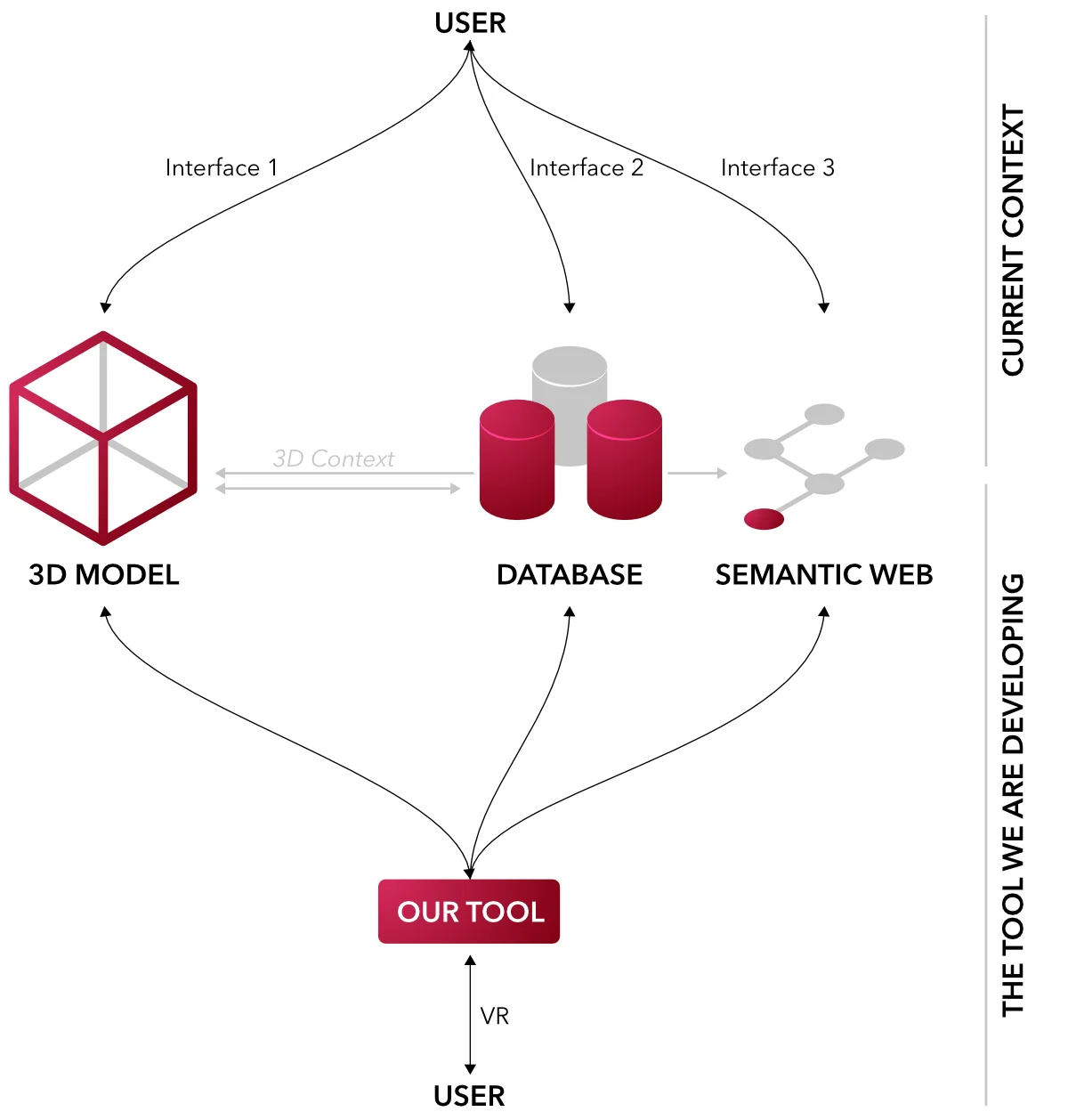VESPACE
Knowledge management
An immersive tool for historical research


Image Depth
In order to create a virtual model that is useful for academic and scientific research, we must approach it with the same rigor in the selection and contextualization of sources as would be the case for a scholarly publication. The totality of the visualized elements represents the choices resulting from several initial hypotheses, with associated documentation recorded in the project’s database.
In a virtual reality environment, it is possible to access all of the sources that have gone into this restitution from within the immersive experience: we call this design principle image depth. This means that the 3D model can serve not only as an appealing point of entry for non-specialists, but also as a medium of scholarly expression, exchange, and research which we aim to endow with the same intellectual value and authority as a print-based academic publication.
For the general public, image depth allows for an understanding of the creation process behind the environment in which users are immersed, and thus of the hypotheses that distinguish a plausible representation of an historical event from the event itself.
For researchers, image depth allows for an authentic analytical engagement, and an ability to contribute and challenge hypotheses, entirely from within the virtual reality model. Examining sources, commenting on them, and creating links between resources and the 3D visualization they support can thus all be accomplished from within a single interface.

What they think they don’t know

Not everything is conscious in virtual reality. Thanks to the impression of corporeal presence, the brain interprets the restitution as if the body were visiting a real space, and thus triggers the same reflexes. These include obvious instincts to avoid furniture and walls, but also the adoption of certain postures or making comments. Thus after putting on a VR headset, a puppeteer started moving and gesturing as if he were inside a real castelet!
Comments can reveal the tacit or practical knowledge of experts, which often escape capture in more conventional media. By simultaneously recording researchers’ commentary, their position in space, and the direction of their gaze, we can identify the object that elicited the comment and integrate this additional information into our database.
This information can be quite precious, and contributes to the overall elaboration of the virtual model by placing the literary, historical, or artistic researcher at the heart of a dynamic and constantly evolving architectural restitution process.
